- Home
- Darrell Maloney
Everything Has Changed Page 8
Everything Has Changed Read online
Page 8
“But why surprise him with it? Why not just tell him about it?”
“Well, two reasons, actually.
“We’ve all seen the sheer joy on the faces of our neighbors when they finally get their blue bundles. Sid sees that look each and every day.
“We thought it would be a great thing; not just for Sid but for all of us too, if we could turn the tables on the man and give him some of that joy back.
“Secondly, we were able to find out from the ladies at the processing center that Friday is Sid’s birthday.
“And that Dean and Shelly Burman are supposed to get their blue bundle for Lot 4861 on Friday afternoon.
“That’s two lots from Sid’s. Sid will be there Friday afternoon to do his inventory of the Burmans’ bundle. Imagine the look on his face when he sees his cabin completely constructed for him.
“Imagine the look when some of our wives walk out of his cabin and approach him with a birthday cake, while the crowd sings happy birthday to him.
“Just the thought of the look upon Sid’s face… that’s worth all the work we’ll put in.”
Chapter 22
As it turned out, a lot of people had been looking for quite some time for some way to show Sid Smith how much he was appreciated.
They’d seen him drag himself out of his RV and to his truck in the early morning hours.
They’d seen him practically fall out of that same truck in the late evening hours and claw his way up the steps into his RV each night.
One thing they had never seen him do was take a break during any of his very long workdays. For lunch he ate on the run while driving between delivery sites or while waiting for a helicopter to arrive.
Their problem was this… what do you buy for a man who seemingly works every waking hour? You cannot buy him rest, or sleep, or a vacation.
Now they finally had their solution.
Their gift for Sid wouldn’t be to buy him anything.
It would be to do something for him; to do something he couldn’t do himself because he was too busy helping them.
Word got around.
By the next day Melvyn and Tony had a list of forty two men.
Each one volunteered their services. There wouldn’t be anyone there who didn’t want to be there, and theoretically there wouldn’t be any slackers on site.
Each one agreed that their labor would be “off the books.” No one would try to claim the hours on their co-op labor logs, or insist that Sid pay them back at some point in the future.
The thinking was that it would make no sense for the group to build Sid’s cabin because he had no time to build it himself, but expect him to help build others’ cabins instead.
No, that would be stupid.
It was agreed by all that Sid’s co-op “pay back sheet” would be completely blank when the job was done.
There were only a couple of unanswered questions, but finding out the answers would be easy.
No one knew if Sid had any family in the lower forty eight who’d be joining him after his cabin was built.
The mere fact he was in Alaska alone didn’t necessarily mean he was a single guy. There were other men who chose to leave their families behind until their home was ready for them. They should, therefore, be careful not to make any assumptions.
Sid, for his part, was certainly no help. He was a man who greatly valued his privacy. He was very tight-lipped about his personal life, even with those who knew him well.
“We could drive to Anchorage,” Hannah offered. “I need to do some grocery shopping anyway. I could stop by the processing center and ask the ladies there.”
“I don’t know,” Gwen countered. “They already went out on a limb to tell us his birthday was coming up. Federal employees can get into big trouble revealing personal information about their co-workers. The government takes such things very seriously.”
Then Tony came up with possibly the best idea he ever had.
“Let’s talk to some of the people who already have their cabins. We can ask to see their inventory sheets.”
“Explain please,” Hannah demanded.
“After Sid does his joint inventory he gives the resident a carbon copy for their own records. They’re supposed to show the sheets to the lumberjacks who come around after Sid leaves.
“I’ve seen a couple of them. They very clearly say, across the top of the sheet, what kind of cabin the package was built for.”
“That’s right,” Melvyn added. “I’ve seen a couple of them too. Across the top they might say ‘Basic cabin with one add-on bedroom’ or ‘Basic cabin with two add-on bedrooms, handicapped accessible.’ They’re all different based on family size and special needs.”
Hannah still didn’t see what they were driving at.
“Yes. But we don’t have Sid’s sheet. And we can’t ask him for it without giving away the surprise.”
Tony said, “Honey, if we ask to see the inventory sheets of our neighbors, we can match them against the items in Sid’s bundle to figure out what type of cabin he’s getting.”
“Okay. Again, explain please.”
“If one of the inventory sheets says it’s for a basic cabin only, we’ll know it’s for a single person with no family. We can pick a couple of items on the sheet. Say, doorknobs and electrical outlets.
“If the inventory sheet for a basic cabin calls for three doorknobs and four electrical outlets, but Sid’s blue bundle has six doorknobs and eight electrical outlets, we’ll know he’s getting more than the basic cabin. We can check other sheets and find out which one calls for six doorknobs and eight outlets instead.”
Once the light came on in Hannah’s head she was impressed.
And suspicious at the same time.
“Tony, that’s a brilliant idea. Who helped you with it?”
“Very funny.”
“Okay, let’s do this,” Gwen said. “You guys said you’re going to find all the volunteers and give them their work assignments for Monday and tell them what tools to bring.
“Hannah and I will go visit all the neighbors who already have their cabins, and ask to borrow their inventory sheets.
“Then we’ll take the sheets to Sid’s bundle and figure out which one corresponds to the parts he received.
“By the time you get back we should know exactly what kind of cabin he’s getting.”
Sometimes the best of human nature is brought out at times of great adversity.
Sometimes good people retain their goodness, no matter how dire the circumstances.
Those good people; those who are that way by nature, do a good job in taking care of one another.
Sid Smith was one of those good people. He worked very long hours and went the extra mile to help people not because he had to, but because they were in a tight spot and he was in a position to help them.
The men and women of Etlunka Lake, in turn, were a pretty good lot themselves.
They wouldn’t let Sid’s hard work and kindness go unrewarded.
Chapter 23
Julie Hamlin was having a very difficult time.
She and Wayne had been married for a very long time.
They’d had the inevitable bumps in the road that all couples suffer. Their families caused a fair amount of turmoil, as they often do.
Having said that, though, most of their problems over the years involved financial things or Wayne’s struggles to maintain an air of independence. Julie shot down Wayne’s desire to buy a Ferrari, saying it was an expensive and pointless gesture.
Their disagreements were just differences of opinion, mostly, about where to live or whether to buy a house or whether they could afford a two-week cruise.
Beyond that foolishness, in all the time they were married they were always faithful and loyal to one another. Always supportive of one another. Always willing to make sacrifices for one another.
That was why she was struggling so this time.
She hated to put her foot down and forbid h
im from going back to the United States to study the sad remains of Yellowstone National Park. To join other scientists in heat suits and oxygen tanks who were venturing maddeningly close to the belly of the beast.
To see how much remained of the Yellowstone Caldera. How much magma it still contained. And how likely it was it would explode again.
The best case scenario, as far as the scientists and humanity in general were concerned, was that the eruption had relieved most of the pressure.
A relief of significant pressure meant the caldera would go back into sleep mode.
That another eruption wasn’t imminent.
That it might be another three hundred thousand years or so before this nightmare happened again.
That was the ideal scenario.
Wayne worried, though, that the blast was nowhere near as large as it should have been.
They had a good idea how large the magma pool was.
They knew roughly how much earth would have to be displaced in order to relieve all the pressure.
And they knew that nowhere near enough earth was blown skyward.
The fact was that Wyoming, Montana and Idaho were mostly still intact.
And they shouldn’t be.
There should be a huge smoking hole where they once were. The sky should be much darker. The ash cover should be much deeper.
The casualty count should have been many times higher.
“For God’s sake, Wayne,” she told him. “Why can’t you just accept what the rest of the world is saying? That we got lucky. We dodged a bullet. The blast wasn’t as bad as it could have been.
“Why can’t you just accept that and go on with your life? Why do you have to want to go back and put yourself in harm’s way? Why not just let it rest?”
“Honey, it’s my job as a scientist to deal with facts. We don’t deal with maybes. We don’t deal with wishes or how we hope things to be. We search for the best and most reliable facts we can find. And then we examine them to determine what they mean. How they’ll affect us, and in this case the earth we live on. Then we determine what’s most likely to happen based on those facts and conclusions.
“It’s what we do, honey.”
“Maybe it shouldn’t be what you do, Wayne. Maybe just for once you should listen to others. The evangelists are saying that God gave mankind a break. That God could have destroyed the world, or most of it, but that in His great wisdom He decided not to. Instead He sent mankind a message. To straighten itself up. They’re saying He was giving us a demonstration of what He is capable if we don’t start behaving better as humans.
“It sounds good to me. I’m willing to accept that, if it means the earth is finished blowing up and killing people for now. And you know me, Wayne. Miss Skepticism. If I can believe it, why can’t you?”
“Oh, for Christ’s sake, Julie. Don’t you think I want to? Don’t you think I’d like to just sit back and play ignorant and ignore my responsibility as a scientist to determine whether this thing is really over?
“I’d like to, honey. Believe me, I really would. I’d like nothing better than to retire and spend the rest of my life walking to and from the bier hall and puttering around in my garden growing tomatoes and such.
“But if this thing has a chance of erupting again in our lifetime, or the next, or the one after that…
“If there’s a secondary eruption coming anytime soon, it’s my job as a volcanologist to warn the public. And not only the public, but the government as well. So that they can start making plans, start relocating people, long before the next eruption takes place.
“Honey, can’t you see?
“I can sit here on my laurels and bury my head in the sand.
“Or I can go back and take my readings and do my calculations, and compare them with the other data to make sure everything falls in line. Then I can go public with my report, and at the same time give it to the federal government.
“If I can tell everybody what’s coming, and if the government listens to me, we might be able to save a lot of lives. Millions of lives. Instead of talking about the millions who died, like they’re doing now, they can talk about the millions who would have died, but who lived because they took the second eruption more seriously than the first.”
“Oh, Wayne… I want to believe you. I really do. But I’m not a scientist. I see all your numbers and data points and pressure readings and all that stuff. And it looks like so much gibberish to me. I wish I could understand.
“It’s like we’re speaking two different languages.”
Suddenly a light came on in Wayne Hamlin’s head.
He said, “I have an idea. Do you remember our old friend Sam? He lives in Daytona Beach with his wife Margo?”
“Sam Becker? Sure. What about him?”
“Let me call him. I want you to talk to him.”
“Not yet. It’s too early. They haven’t even got out of bed in Florida yet.”
“Sam’s up. It’s almost five a.m. there. He’s always been an early riser. You’ll see.”
Chapter 24
Five minutes later Wayne handed her his phone.
“I told you he was up,” he smiled and said.
Sam’s sleepy voice, on the other end of the phone, made Julie suspect that wasn’t the case. Despite his protestations of “No, no… I was already awake,” she was pretty sure he was just being nice.
“Wayne asked me to explain a half-erupted volcano the same way I explain it to my freshman and sophomore college students.”
“Okay…”
“For a long time I was boring them, talking of pressure points, the force-pressure of certain types of rocks and how hairline fissures in various bedrocks affected the trigger mechanisms.”
Julie didn’t realize it until it was too late, but the good professor was already starting to bore her.
She very noisily stifled a major yawn. And very clumsily so as well, for he heard her from his end of the phone.
“That’s my point exactly,” the professor said, referring to her yawn. “I was boring my students horribly, and some of them were half asleep or playing on their phones before I got to the testable information.
“I looked and looked for another way of teaching. Something they could relate to. Something that would hold their attention until they could grasp the point I was trying to leave upon them.”
“Uh, huh…” Julie said, while noticing her eyelids were getting dreadfully heavy.
“Then it dawned on me. Pimples. The answer was pimples.”
Julie’s eyelids were suddenly lighter.
She involuntarily turned her head slightly to one side, unsure whether her ears had deceived her.
To herself she said, “Did he just say pimples?”
He had indeed.
He went on to explain.
“Most of my students are still in their teens. The vast majority of them are eighteen or nineteen.
“Most of them have experienced acne, or have had a close friend who’s been cursed with it. Many of them are still dealing with it.
“And all of them have experience in popping the pimples that occasionally found their way upon their faces, or watched their friends pop pimples while they stood by and said such things as, ‘Ewww, gross.’
“Doctors and dermatologists constantly tell teens not to pop their pimples, but rather to use cleansing pads or facial washes.
“They tell the poor teens that a habit of popping the little monsters can result in serious scarring. Yet most teenagers would rather pop a pimple and get rid of it instantly than scrub their faces and wait for days for it to go away.”
“So what, if you don’t mind me asking, professor... does this have to do with volcanoes?”
“I’m sorry, Julie. Sometimes I ramble a bit.
“Truth is they have a lot in common because they work more or less the same way. Pimples and volcanoes, that is.
“I tell my students that pimples are caused when sebum combines with dead sk
in cells to block the pores of their skin. Sebum is the nasty liquid stuff that fills the pimple, and what most people of that age call pus.
“I tell them that when they pop a pimple it’s important they get all of the sebum out of it. They do that by squeezing it until it starts to bleed. The bleeding is what washes the last of the sebum out of the pore and allows it to heal.
“On the other hand, if they don’t squeeze it until it bleeds, they didn’t remove all the sebum. Inside the sebum left behind are bacteria, which will grow and multiply and make the pimple come back again.
“Every one of my students can relate to that, for they’ve been there. Many are still there. So it’s easy for them to understand what I’m getting at.
“Once we’re on the same sheet of music I tell them that a volcano works in much the same way.
“With a volcano, the magma is molten rock located far beneath the ground, inside the volcano’s core. Many people confuse magma with lava, but it’s the same thing. When it’s below ground it’s in liquid form and it’s called magma. When it goes above ground and is exposed to cooler air it’s called lava and reverts back to a solid state by hardening.
“The magma within a volcano’s core is superheated and causes pressure to build. Just as sebum mixed with bacteria in a pimple causes pressure to build inside the pimple.
“When one squeezes a pimple it’s the pressure which causes it to burst. Just like when the pressure within a volcano gets too great the volcano will erupt.
“Again, when all the sebum is squeezed from a pimple until it bleeds, the pimple has been cleansed of sebum and bacteria and will heal.
“If a volcano erupts so violently that all the magma is ejected, it typically will not reform for a very long time. Usually thousands of years. This was true of Krakatoa and Mount Saint Helens. They both resulted in violent explosions which cleaned out most or all of their magma and relieved most of their pressure. Now they’ll eventually erupt again, for they sit on calderas and that’s what they do. But in both of those cases they’re not expected to erupt again for thousands of years.

 A Perilous Journey
A Perilous Journey The Yellowstone Event: Book 6: The Aftermath
The Yellowstone Event: Book 6: The Aftermath Eden Bound
Eden Bound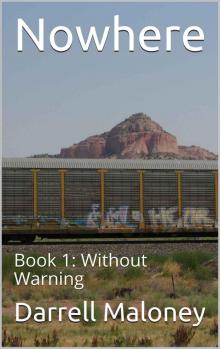 Without Warning
Without Warning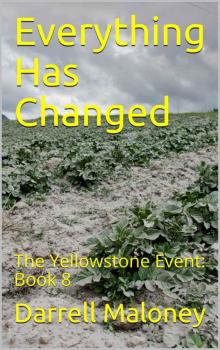 Everything Has Changed
Everything Has Changed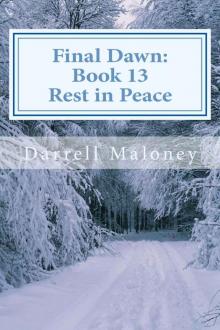 Rest in Peace
Rest in Peace This Changes Everything
This Changes Everything The Final Chapter
The Final Chapter It Can't Be Her
It Can't Be Her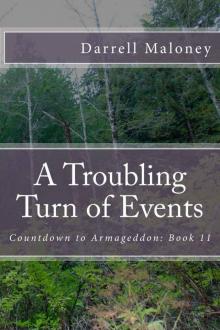 A Troubling Turn of Events
A Troubling Turn of Events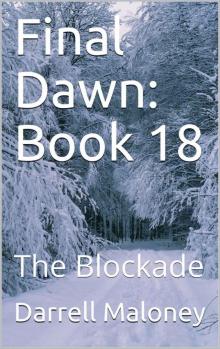 The Blockade
The Blockade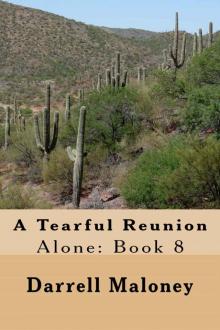 A Tearful Reunion
A Tearful Reunion Countdown to Armageddon
Countdown to Armageddon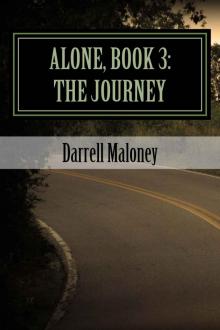 Alone, Book 3: The Journey
Alone, Book 3: The Journey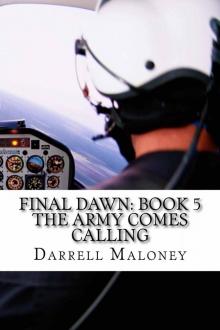 The Army Comes Calling
The Army Comes Calling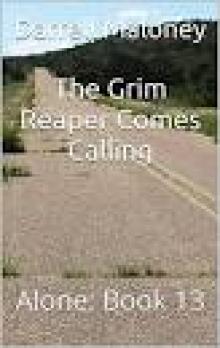 The Grim Reaper Comes Calling
The Grim Reaper Comes Calling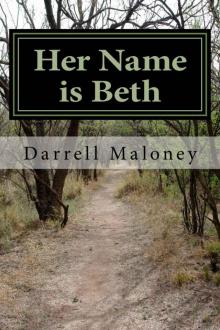 Her Name is Beth: Alone: Book 5
Her Name is Beth: Alone: Book 5 Red: The Adventure Begins
Red: The Adventure Begins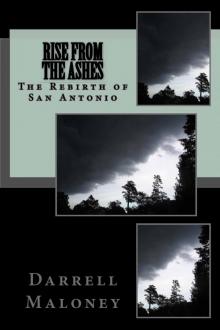 Rise From The Ashes: The Rebirth of San Antonio (Countdown to Armageddon Book 3)
Rise From The Ashes: The Rebirth of San Antonio (Countdown to Armageddon Book 3)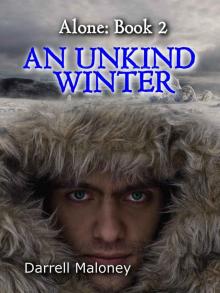 An Unkind Winter (Alone Book 2)
An Unkind Winter (Alone Book 2)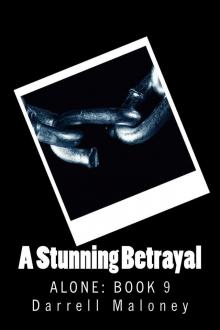 A Stunning Betrayal: Alone: Book 9
A Stunning Betrayal: Alone: Book 9 A Whole New World: Ranger: Book 2
A Whole New World: Ranger: Book 2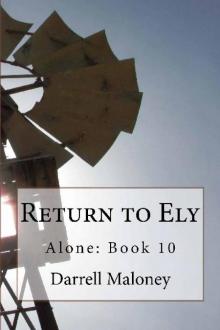 Return To Ely
Return To Ely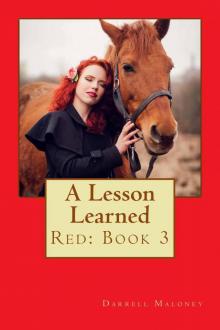 A Lesson Learned: Red: Book 3
A Lesson Learned: Red: Book 3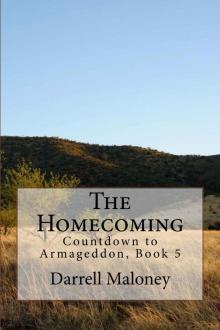 The Homecoming: Countdown to Armageddon: Book 5
The Homecoming: Countdown to Armageddon: Book 5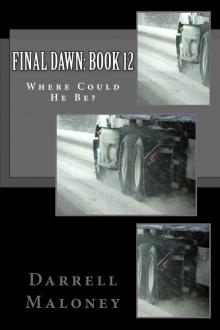 Final Dawn: Book 12: Where Could He Be?
Final Dawn: Book 12: Where Could He Be?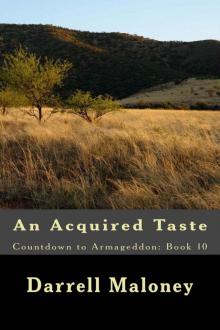 An Acquired Taste
An Acquired Taste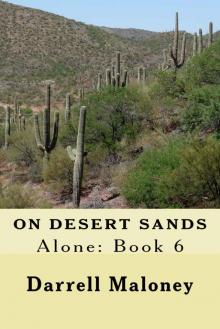 On Desert Sands: Alone: Book 6
On Desert Sands: Alone: Book 6 The Battle: Alone: Book 4
The Battle: Alone: Book 4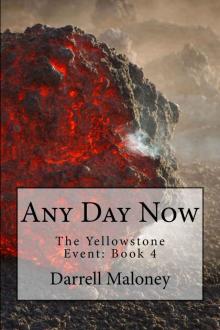 Any Day Now
Any Day Now Too Tough To Tame: Red: Book 2
Too Tough To Tame: Red: Book 2 No Help From Austin: Red: Book 5
No Help From Austin: Red: Book 5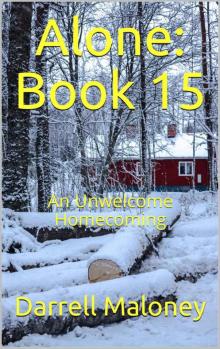 An Unwelcome Homecoming
An Unwelcome Homecoming A New Start: Final Dawn: Book 9 (Volume 9)
A New Start: Final Dawn: Book 9 (Volume 9)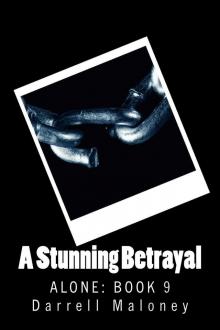 A Stunning Betrayal
A Stunning Betrayal An Undeclared War (Countdown to Armageddon Book 4)
An Undeclared War (Countdown to Armageddon Book 4) One of Our Own: Final Dawn: Book 11
One of Our Own: Final Dawn: Book 11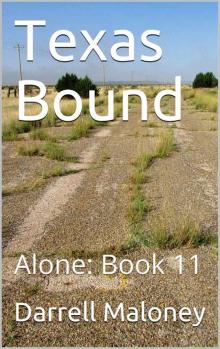 Texas Bound: Alone: Book 11
Texas Bound: Alone: Book 11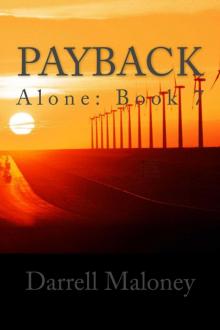 Payback: Alone: Book 7
Payback: Alone: Book 7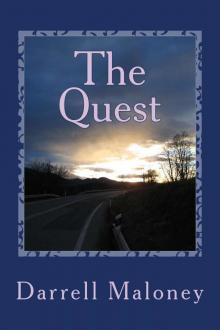 The Quest: Countdown to Armageddon: Book 6
The Quest: Countdown to Armageddon: Book 6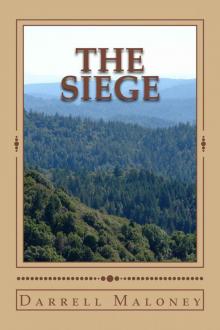 The Siege
The Siege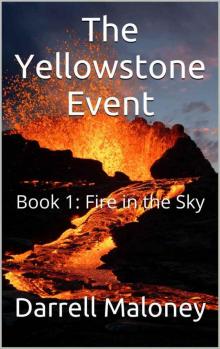 The Yellowstone Event: Book 1: Fire in the Sky
The Yellowstone Event: Book 1: Fire in the Sky Return to Blanco (Red Book 4)
Return to Blanco (Red Book 4)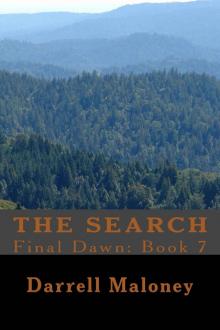 The Search
The Search AFTER THE DUST SETTLED (Countdown to Armageddon Book 2)
AFTER THE DUST SETTLED (Countdown to Armageddon Book 2) Death Comes Calling (Ranger Book 3)
Death Comes Calling (Ranger Book 3) A Long Road Back: Final Dawn: Book 8
A Long Road Back: Final Dawn: Book 8